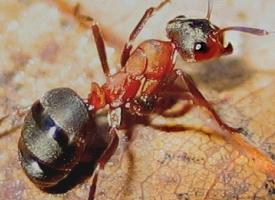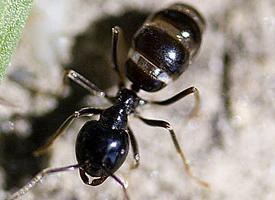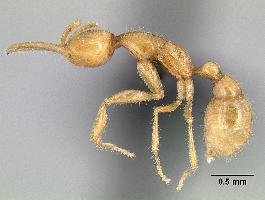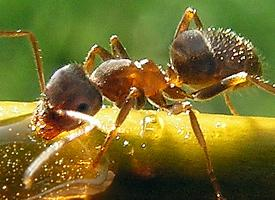
Stav ohrožení
| Ohrožen |
Popis zvířete
The Red wood ant, scientifically known as Formica rufa, is a fascinating species of ant predominantly found in the forests of Europe and parts of Asia and North America. This species is particularly notable for its distinctive reddish-brown coloration, which serves as the origin of its common name. These ants are medium to large in size, with workers typically measuring between 4.5 to 9 millimeters in length, showcasing a striking contrast between their dark-colored abdomen and lighter colored thorax and head.Formica rufa is renowned for its complex and highly organized social structure, residing in large colonies that can house up to several hundred thousand individuals. These colonies are built from pine needles, twigs, and other forest debris, forming large mounds that can reach up to a meter in height. These mounds play a crucial role in regulating the internal temperature and humidity, creating a stable environment for the ants and their brood.
The red wood ant exhibits a diverse diet, primarily consisting of aphid honeydew, which they actively farm by protecting and tending to aphid colonies. They also engage in hunting small insects and scavenging for sweet substances and proteins to feed their larvae and sustain the colony. This diet makes them significant ecological players in controlling pest populations and cycling nutrients within their forest habitats.
One of the most remarkable aspects of Formica rufa is their sophisticated system of communication, which relies heavily on chemical signals, or pheromones, and tactile signals through antennal contact. These ants demonstrate an impressive range of behaviors, from coordinating attacks on intruders to recruiting fellow workers to new food sources, showcasing their advanced social intelligence.
Furthermore, red wood ants exhibit a form of collective defense mechanism, where they aggressively protect their nests from predators and intruders. When threatened, they can eject formic acid from their abdomens, a potent chemical that deters most predators. This defensive strategy, combined with their strong mandibles, makes them formidable opponents despite their size.
The ecological role of Formica rufa cannot be overstated. They contribute significantly to the health of forest ecosystems through their activities. By preying on pests and turning over soil as they build and maintain their nests, they aid in nutrient recycling and soil aeration, promoting plant health and growth. Additionally, their mounds provide habitats for various microorganisms and invertebrates, further enriching the biodiversity of their environment.
In conclusion, the Red wood ant, Formica rufa, is an extraordinary example of the complexity and interdependence of forest ecosystems. Their intricate social structures, diverse diet, sophisticated communication methods, and significant ecological roles underscore the importance of these ants in maintaining the balance and health of their habitats. Their presence is a testament to the marvels of evolutionary adaptation and the intricate web of life that sustains our natural world.
Podobná zvířata
Nové fotografie zvířat
Top 10 zvířat
- Dolphin gull (Leucophaeus scoresbii)
- Diana monkey (Cercopithecus diana)
- Moustached guenon (Cercopithecus cephus)
- Galápagos tortoise (Geochelone nigra complex)
- Russian tortoise (Testudo horsfieldii)
- Japanese macaque (Macaca fuscata)
- Greek tortoise (Testudo graeca)
- Stone loach (Barbatula barbatula)
- Common flying dragon (Draco volans)
- Colossal squid (Mesonychoteuthis hamiltoni)


